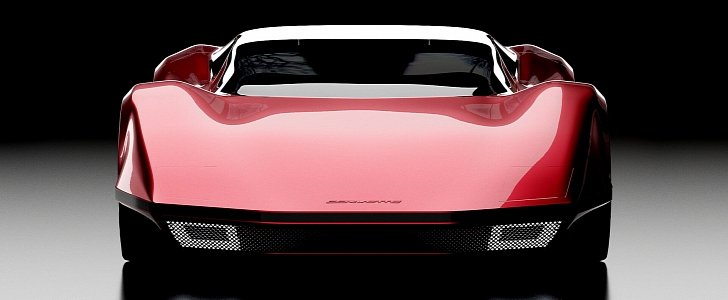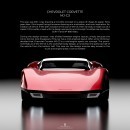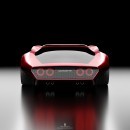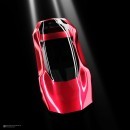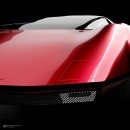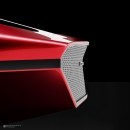Introduced late in the 1953 model year, the Corvette needed more than six decades and seven generations to adopt the mid-engine layout of the eighth generation. The 2020 model year embodies Zora Arkus-Duntov’s dream of a racecar design for the road, but over the course of the years, Chevy presented us with offbeat concepts such as the “Corvette Impala."
The CERV, Mako Shark, Astro, and rotary-engined AeroVette concepts are also worthy of mentioning, and the list goes on and on. However, the golden bowtie never quite experimented with a high-speed Corvette design.
Stretching the rear end of the McLaren F1 GTR would lead you into believing that the Longtail is faster than the road-going car, yet that’s not actually the case because of the prominent roof scoop and ginormous wing that keeps the racing car glued to the track on the Mulsanne straight at Le Mans.
However, the MJ-C3 design study from Croatian pixel artist Josip Mihic is more of a Speedtail rather than a Longtail. Penned with C4 Corvette wheels, pop-up headlights, quad taillights, and four tailpipes, the rendering before your eyes also happens to feature a long and wingless rear deck.
“During the design process I was divided between engine layouts, simply because the iconic bonnet look disappears if the car has a mid-engined layout,” explains Josip. “The prominent feature is the clamshell body design. A horizontal line splits the top half of the vehicle from the bottom half.”
Taking a good look at the overhead shot further reveals gullwing-style doors and two discreet air intakes. The rendering is unmistakably Corvette with a dash of Italian coachbuilt exotica from the era when wedges were all the rage. To the point, think about the Maserati Boomerang and Ferrari Modulo.
In the real world, the MJ-C3 wouldn’t be legal to drive nor exactly pleasant to drive in congested cities and busy highways. But on a long stretch of asphalt such as the Ehra-Lessien test track in Germany, this design study would certainly surpass the C7 ZR1 in terms of top speed with the right gearing.
As a brief refresher, the previous generation of the Corvette in range-topping ZR1 specification hits 212 mph (341 km/h). By comparison, the six-cylinder C1 for the 1953 model year can barely top 108 mph (174 km/h).
Stretching the rear end of the McLaren F1 GTR would lead you into believing that the Longtail is faster than the road-going car, yet that’s not actually the case because of the prominent roof scoop and ginormous wing that keeps the racing car glued to the track on the Mulsanne straight at Le Mans.
However, the MJ-C3 design study from Croatian pixel artist Josip Mihic is more of a Speedtail rather than a Longtail. Penned with C4 Corvette wheels, pop-up headlights, quad taillights, and four tailpipes, the rendering before your eyes also happens to feature a long and wingless rear deck.
“During the design process I was divided between engine layouts, simply because the iconic bonnet look disappears if the car has a mid-engined layout,” explains Josip. “The prominent feature is the clamshell body design. A horizontal line splits the top half of the vehicle from the bottom half.”
Taking a good look at the overhead shot further reveals gullwing-style doors and two discreet air intakes. The rendering is unmistakably Corvette with a dash of Italian coachbuilt exotica from the era when wedges were all the rage. To the point, think about the Maserati Boomerang and Ferrari Modulo.
In the real world, the MJ-C3 wouldn’t be legal to drive nor exactly pleasant to drive in congested cities and busy highways. But on a long stretch of asphalt such as the Ehra-Lessien test track in Germany, this design study would certainly surpass the C7 ZR1 in terms of top speed with the right gearing.
As a brief refresher, the previous generation of the Corvette in range-topping ZR1 specification hits 212 mph (341 km/h). By comparison, the six-cylinder C1 for the 1953 model year can barely top 108 mph (174 km/h).
